
- 6 x 6 x 12 inches
- Item Weight 8.58 pounds
- Sanco Industries
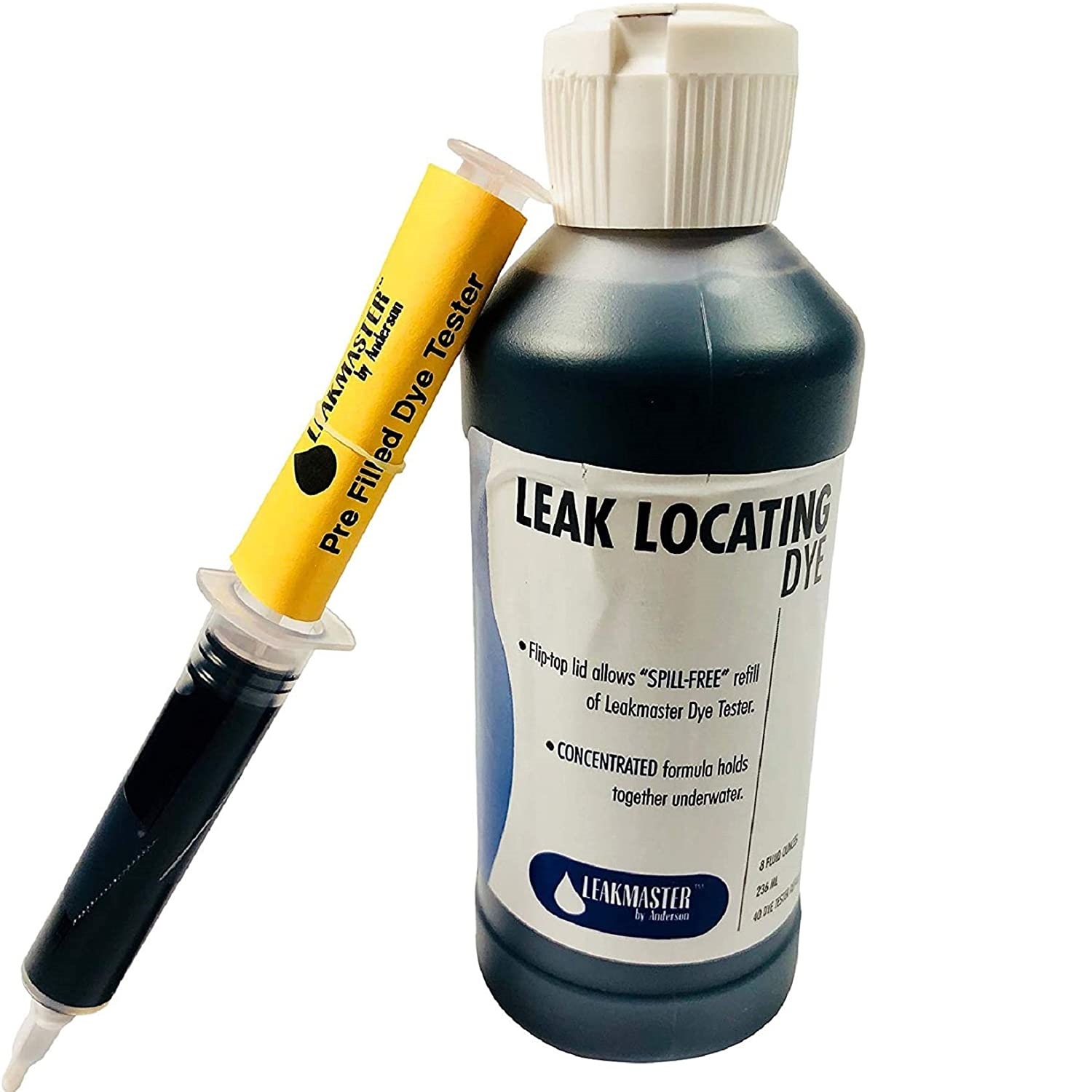
- Brand: Leakmaster
- Color: Blue
- 2.75 x 2.25 x 6 inches

- Pond Champs
- Item Weight 4 pounds
- Sanco Industries
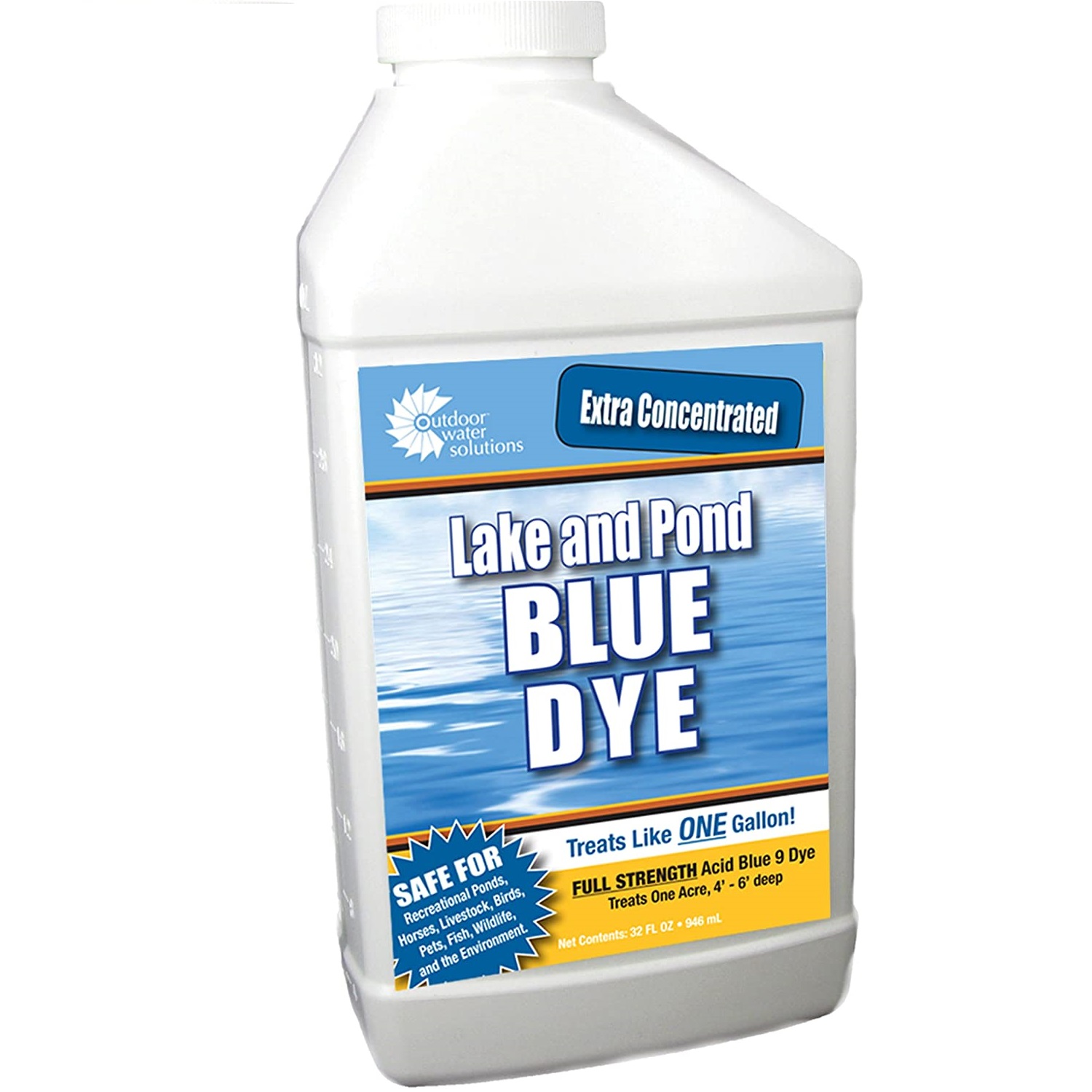
- Pond Dye
- 4.75 x 2 x 12 inches
- 2.55 pounds
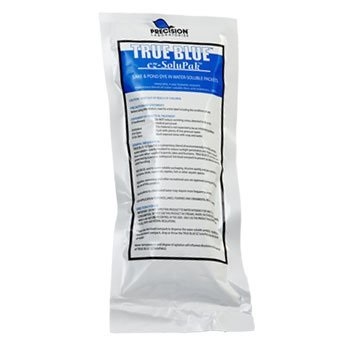
- Precision Laboratories
- Material Plastic
- Precision Labs
Choose the Best Pond Dye
Customer’s Choice: the Best Rated Pond Dyes
26 users answered this survey. Please help us improve this review!
If you’re looking for a guide to the best pond dyes, look no further! In this article, we’ll discuss everything you need to know about dyeing your pond. We’ll answer some common questions and give you some useful tips on how to get the best results. So whether you’re looking to change the color of your pond or simply improve its appearance, keep reading for all the information you need!
Table of Contents
Crystal Blue Lake and Pond Dye – Royal Blue Color – 1 Gallon
 It is safe for all aquatic life and will not harm fish. You can use it in fresh or salt water. Crystal Blue is a colorant that will add a beautiful blue hue to your pond while also providing long-lasting results.
It is safe for all aquatic life and will not harm fish. You can use it in fresh or salt water. Crystal Blue is a colorant that will add a beautiful blue hue to your pond while also providing long-lasting results.
Features
- Dimensions 6x6x12 inches
- Weight 8.91 pounds
- Liquid Volume 1 Gallon
- Target Species Fish
Leakmaster BLUEDYE8OZ Pool DYE Leak Detection, Blue
 This product is designed for pool leak detection. It is safe to use and will not harm your fish or plants. The dye comes in a concentrated form and you only need to use a small amount to get great results.
This product is designed for pool leak detection. It is safe to use and will not harm your fish or plants. The dye comes in a concentrated form and you only need to use a small amount to get great results.
Features
- Dimensions 2.75 x 2.25 x 6 inches
- Weight 10.2 ounces
Pond Champs 11400 Aqua Blue Pond Dye, Turquoise
 This is a great pond dye. It is a great product for those who want to add some color to their ponds. The dye is made from natural ingredients and it is safe for wildlife. It will not harm your filtration system or affect the quality of your water.
This is a great pond dye. It is a great product for those who want to add some color to their ponds. The dye is made from natural ingredients and it is safe for wildlife. It will not harm your filtration system or affect the quality of your water.
The pond dye comes in a size gallon container and it will last for up to four weeks.
Features
- Dimensions 7.3×4.6×11.3 inches
- Weight 4 pounds
- Liquid Volume 128 Fluid Ounces
- Target Species Fish
Outdoor Water Solutions PSP0125 Lake and Pond Dye, Blue
 This is one of the most well-known pond dyes. It is an all-natural, non-toxic way to color your pond or lake water. The blue color will last for several months and will not harm fish or plants.
This is one of the most well-known pond dyes. It is an all-natural, non-toxic way to color your pond or lake water. The blue color will last for several months and will not harm fish or plants.
Features
- Dimensions 12.07 x 5.08 x 30.48 cm
- Weight 1.16 Kilograms
- Liquid volume 32 Fluid Ounces
Precision Labs True Blue EZ SoluPak Pond & Lake Dye
 It comes in a water-soluble packet. It will quickly dissolve and release the dye, which will then evenly distribute throughout the water.
It comes in a water-soluble packet. It will quickly dissolve and release the dye, which will then evenly distribute throughout the water.
One of its benefits is that it is quite concentrated. This means that you only need to use a small amount to achieve the desired effect. Additionally, it is also very long-lasting and will provide up to six months of protection from sunlight and UV rays.
Features
- 6×6.25 ounce
- 4 cartons p/master case
Buyer’s Guide
What Is Pond Dye?
Pond dye is a water-soluble powder or liquid that is added to ponds, lakes, and other large bodies of water to improve their appearance.
Pond dyes can also be used to reduce sunlight penetration, which can help prevent aquatic plants from growing too rapidly.Pond dyes are available in a variety of colors, including black, blue, green, red, and purple. They are typically applied using a pump or an applicator bottle and should be mixed thoroughly before being added to the water. When using pond dye, it’s critical to follow the manufacturer’s instructions precisely, since too much or not enough can lead to difficulties.
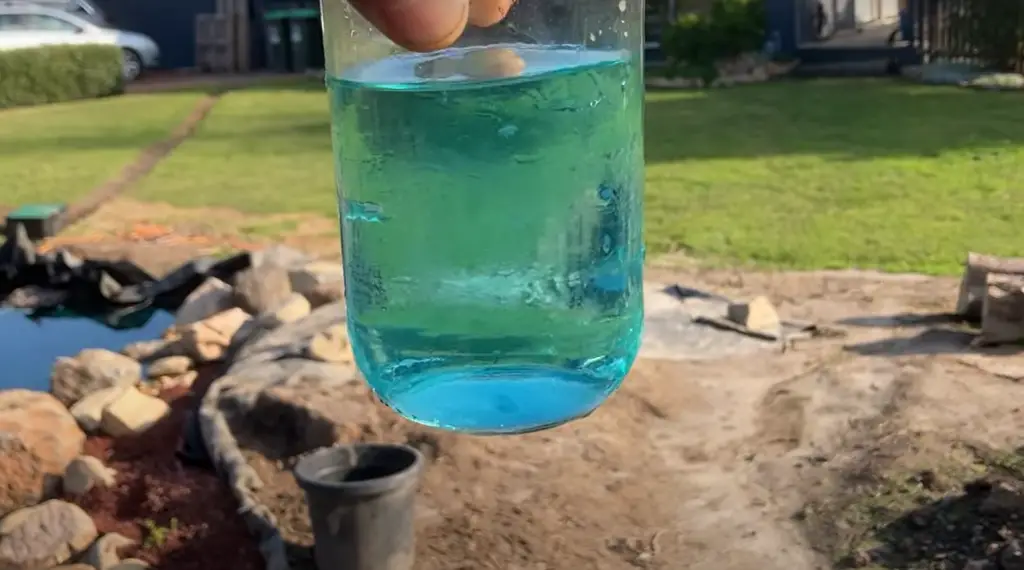
Pond dyes are generally safe for humans, animals, and plants when used as directed. However, they can be toxic to fish if the concentration is too high. It is important to contact a wildlife agency before using the dye in order to ensure that it will not harm the local ecosystem.
If you are considering using pond dye in your own backyard pond, there are a few things you should keep in mind. First, you will need to choose the right color for your pond. Black dyes work well in ponds that receive a lot of sunlight, while blue dyes are better suited for ponds that do not get as much sun exposure. Second, you will need to determine the right concentration of dye for your pond. Too much dye can be harmful to fish and other aquatic creatures. Finally, you will need to consider the amount of time that the dye will need to be in contact with the water in order to be effective. Typically, pond dyes need to be applied every two weeks or so in order to maintain their efficacy. [1]
Pond dyes can be a great way to improve the appearance of your backyard pond and keep algae under control. However, it is important to use them safely and correctly in order to avoid harming local wildlife. If you have any questions about using pond dye, please contact your local extension office or wildlife agency.
Factors To Consider
Not all pond dyes are equal. In order to choose the best one for your needs, there are a few factors you need to take into account. Here they are:
- The type of dye you need will depend on the purpose you’re using it for. If you’re looking to add some color to your pond for aesthetic reasons, then any type of dye will do. However, if you’re trying to control algae growth or reduce sunlight penetration, then you’ll need a specific type of dye.
- The size of your pond will also dictate the amount of dye you need and how often you’ll need to reapply it. Smaller ponds will require less dye and won’t need to be treated as often.
- The type of water in your pond will also play a role in the kind of dye you need. If you have hard water, then you’ll need a different type of dye than if you have soft water.
- You’ll also need to take into account the time of year when choosing a pond dye. Some dyes are only effective in certain seasons, so make sure to pick one that will work for the time period you need it.
Safety
Before adding any type of pond dye to your water feature, you should take a few safety precautions. First, make sure the product is safe for fish and other aquatic life. Second, follow the manufacturer’s directions carefully. Finally, before applying the pond dye to the entire pond, test it in a tiny region.
Cost
Pond dyes are relatively inexpensive, with most products costing less than $50. However, the cost will vary depending on the size of your pond and the type of dye you choose.
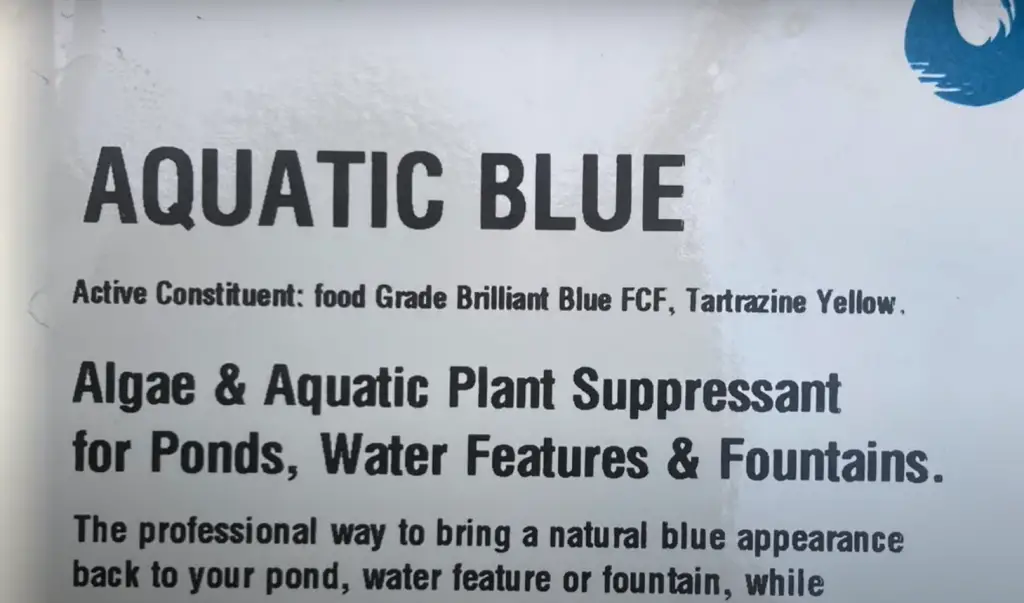
Pond dyes are a great way to add a splash of color to your water feature. But before you buy, be sure to do your research and follow these simple tips. With a little planning, you can find the perfect pond dye for your needs.
Result
When used properly, pond dyes can add beautiful and natural-looking color to your water feature. They can also aid in the reduction of algae formation and pond upkeep. So, if you’re looking for a way to add some pizzazz to your pond, consider using a dye. Just be sure to follow the manufacturer’s directions and always test the product in a small area before applying it to your entire pond.
Algae Control
One of the advantages of pond dye is that it may aid in the reduction of algae. Algae are a type of plant that can grow in ponds, and they can cause the water to become murky and green. By adding pond dye to your water, you can create a barrier that prevents sunlight from reaching the algae. This will help keep the pond clean.
Size Of Your Pond
When choosing a pond dye, it’s important to consider the size of your pond. The larger the pond, the more dye you’ll need to add. Be sure to follow the manufacturer’s directions carefully so that you don’t add too much or too little dye.
Ease Of Use
Pond dyes are easy to use and apply. Simply follow the manufacturer’s directions, and you’ll be able to add beautiful color to your pond in no time.
Pond’s Surroundings
When adding pond dye to your water, it’s important to be aware of the surroundings. If you have plants or animals near the pond, be sure to test the product in a small area first. This will help you ensure that the pond dye is safe for them.[2]
Pond Dye Application: How Do I Apply Pond Dye?
The application process for pond dye is actually quite simple and does not require any special equipment. You will need to purchase the desired amount of product, based on the size of your pond, and then follow the instructions provided.
This way, you can avoid over-dyeing your pond and causing water quality issues.To apply the pond dye, you will simply need to pour it into the water around the perimeter of your pond. Once applied, the dye will quickly disperse throughout the entire body of water. Some products may instruct you to mix them with a small amount of water before adding them to your pond but, in most cases, this is not necessary.
It is important to remember that pond dye is not a one-time application and will need to be reapplied on a regular basis, typically every few months. This can vary depending on the product you use as well as the amount of sunlight and water flow your pond receives. Be sure to follow the manufacturer’s instructions for the best results.
Step 1: Understand Your Pond’s Condition And Buy The Dye Accordingly
The first thing you need to do is assess your pond’s condition. Is the water quality good? Is the algae growth under control? Do you have any fish or other aquatic life in the pond? Depending on the answers to these questions, you will need to buy a pond dye that suits your needs.
If your pond is in good condition and you don’t have any aquatic life, you can use a cheaper, less concentrated dye. If your pond has poor water quality or a lot of algae growth, you will need to buy a more expensive, more concentrated dye.
Step 2: Determine The Amount Of Dye Your Pond Requires
The next step is to determine how much pond dye you will need. This will depend on the size of your pond and the depth of the water. A general rule of thumb is to use one gallon (about four liters) of pond dye for every acre (about 0.40 hectares) of surface area.
If you have a small pond, you can buy a ready-made pond dye kit that includes everything you need. If you have a large pond, you will need to buy concentrated pond dye and mix it with water according to the manufacturer’s instructions.
Once you have determined the amount of dye your pond requires, you are ready to proceed to the next step.
Step 3: Apply Pond Dye
Applying pond dye is simple. You can either pour it directly into the water or use a watering can to disperse it over a larger area. It’s important to make sure the dye is evenly mixed, so be sure to give it a good stir before you leave it be. [3]
Benefits Of Pond Dye
The benefits of pond dye are numerous. It’s not only beautiful, but it also has a number of advantages.
Beautifies Pond
The most frequent reason for using the dye is its visual appeal. It can really add some pizzazz to a water feature that might be looking a little lackluster.
It comes in many diverse colors, so you can pick the perfect shade to complement the pond. It’s easy to see the difference a few drops of dye can make!
It can also help reduce glare on the water surface, making it easier to enjoy the pond from afar.
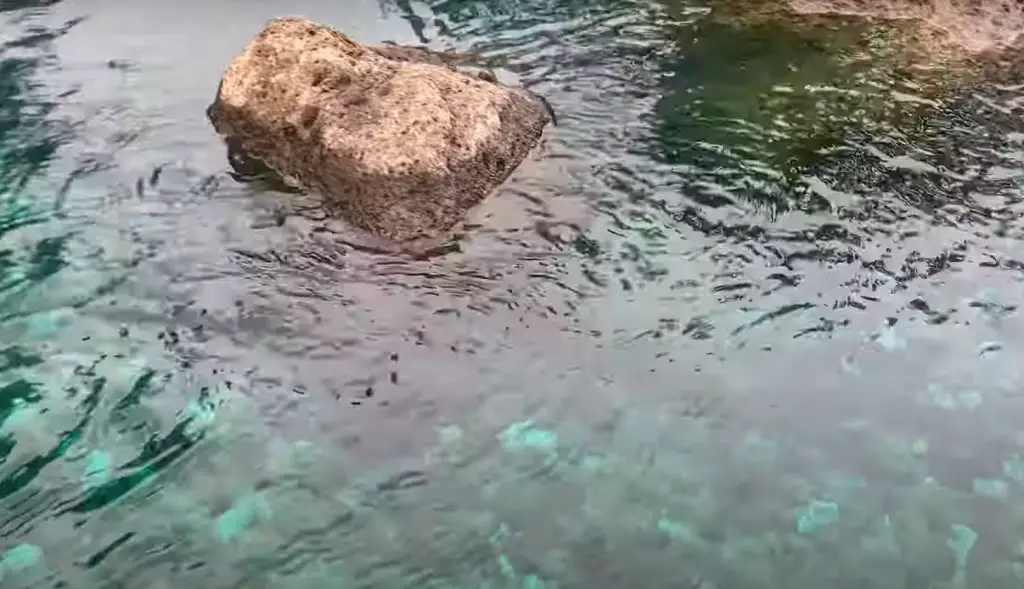
If you have fish, adding a bit of color can also help them feel more comfortable and hidden from predators.
Thus, the dye is an easy and affordable way to enhance the look of your water feature. And it doesn’t require any special equipment or maintenance. Add it to the water and enjoy!
Protects Fish
It can also help protect the fish and other wildlife in the pond.
The tinted water can help block out the sun’s harmful UV rays, which can cause problems for fish and other aquatic creatures.
Help Reduce Algal Growth
In addition, it can help reduce algal growth. Algae thrive in direct sunlight, so by covering the water with pond dye, you can assist prevent algae blooms.
This is especially beneficial in the summer months when the sun is strongest and algae growth is more likely.
The dye can also help keep the pond clean. By reducing algal growth, it prevents the water from turning that murky green.
Not only does pond dye make your water look better, but it also helps to keep it healthy!
Non-Toxic
It is also non-toxic and safe for the environment.
It will not harm plants, animals, or humans. And it’s completely biodegradable, so you don’t have to worry about it polluting the water or harming wildlife.
Makes Fish Feel Safe
As we’ve previously said, the dye may also be used to create fish feel secure. Tinted water may assist conceal the fish from predators and offer them with a sense of security.
This is especially important for baby fish or fry, which are very vulnerable to predators. By obscuring the water with pond dye, you may boost their chances of survival.
It can also help reduce stress in fish. The calm, tinted water can help take some of the pressure off and allow them to relax.
Overall, pond dye is a great way to enhance the look of your pond or lake while also providing some benefits for the fish and other wildlife.
Prevents UV Rays
As we mentioned before, pond dye can help protect fish and other aquatic creatures from the sun’s harmful UV rays.
These rays can cause problems for fish, including skin damage, disease, and even death.
You may help minimize the amount of UV radiation that fish receive by shading the water with the dye.
It is a great way to protect your investment in fish!
Economical
Pond dye is also a very economical way to improve the pond’s look. [4]
A little goes a long way, so you don’t need to use much to see a big difference. And it lasts for months, so you don’t have to keep reapplying it.
Different Colors
There are several various colors of pond dyes available on the market. The most popular ones are blue, green, and black. Each color has its own benefits and drawbacks.
Blue
Blue dye is the most popular choice among pond owners. It hides any algae or grass in the water well. It reflects sunlight, allowing your pond to stay cooler in the summer. The only downside to blue is that it can make the water look artificially blue.
Green
Green pond dye is another popular choice. It helps to camouflage any plants or algae in the water. Green pond dye also reflects sunlight, which can help keep your pond cooler in the summer months. The only disadvantage of green is that it may make your water appear to be artificially green.
Black
Black pond dye is the least popular choice among pond owners. It hides any algae or plants in the water, which is a major benefit. However, black pond dye absorbs sunlight, which can make your pond warmer in the summer months. The only upside to black is that it makes your water look naturally dark and murky.
Turquoise/Aqua
Turquoise or Aqua pond dye is a newer color on the market and offers the benefits of both blue and green dyes. It does an excellent job of hiding any algae or vegetation in the water while still allowing sunlight to reflect off the surface, keeping your pond cooler in the summer months. The only disadvantage of turquoise is that it may make your water appear too blue-green. [5]
What Color Dye Is Best For Your Pond?
There are a variety of colors to choose from. Depending on the look you are going for, you may want to select a certain color. For example, if you want the pond to appear more natural, consider utilizing a green or blue dye. If you want to brighten it, consider using a red or orange dye. Ultimately, the decision is up to you and what will look best in your space.
Another thing to keep in mind when selecting a color is how long you want the color to last. Some dyes will only last for a few weeks while others can last for several months. If you are looking for a long-lasting option, you may want to choose a darker color.
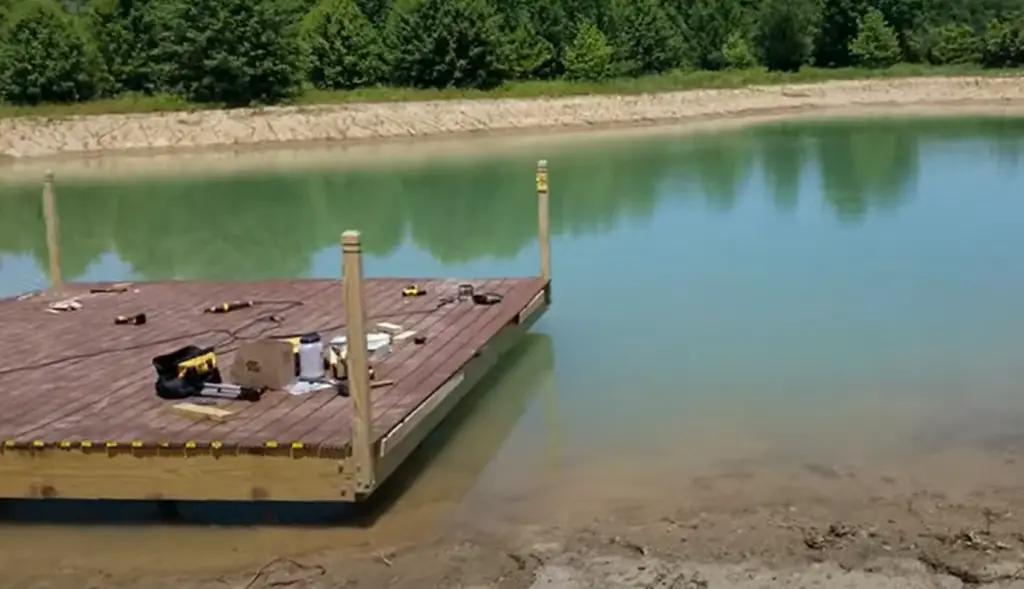
The dyes are a great way to enhance the appearance of the pond and can be used to achieve a variety of diverse looks. When selecting a dye, be sure to keep in mind the color you want, how long you want it to last, and the overall look you are trying to achieve. With so many options available, you are sure to find the perfect pond dye for your space!
Pond Dye For Algae Control
The dye can also be used as an algae control measure. The algae growth can cause a number of problems in ponds, such as decreased water quality. By adding the dye, you can help to reduce the amount of sunlight that penetrates the water, which can inhibit algae growth.
Pond Dye For Natural Look
It can also be used to create a more natural look for your pond. By selecting a natural-looking color, such as green or blue, you can give the pond a more attractive and inviting appearance.
Pond Dye For Deterring Predators
One of the advantages is that it may discourage predators. If you have a problem with predators such as herons or coyotes, then adding a dye to the water can make it less visible and therefore less tempting for them. The best dyes for this purpose are usually black or dark blue.
How To Maximize The Result Of Your Pond Dye
The amount of dye you’ll need will depend on the size and depth of your pond as well as the desired color.
Once you’ve determined how much dye you need, it’s time to add it to your pond. The easiest way to do this is to pour the dye into a pail of pond water and then thoroughly mix it before adding it to the main body of water. This step is important because it ensures that the color is equally distributed across.
Remember that you may always add more dye if you want a darker hue, but it’s impossible to lighten the color once it’s been introduced. So, it’s always best to err on the side of caution and add less dye than you think you need at first. You may always add more if necessary.
Once you’ve added the dye to your pond, be sure to give it a few days to fully develop before making any final judgments about the color. And that’s all there is to it! With a little bit of planning and care, you can easily achieve the perfect hue.
Remove Algae
Before you add the dye, it’s important to remove any algae or debris that might be floating on the surface. This will ensure that the color of the dye is true and not obscured by algae or other particles. You can use a net or skimmer to remove debris.
Treat Tannins
If your pond water is dark and tea-colored, it likely contains tannins. Tannins are organic compounds that can give water a yellow or brown color. While they’re not harmful to humans or animals, they can impact the color of the dye. If you treat tannins before adding dye to the pond, you’ll achieve a truer, more vibrant color.
To treat tannins, you’ll need to use a product like Pond Logic® ClearPAC Plus. This product will bind with the tannins in your water and make them easier to filter out.
No Activated Carbon Treatment
When using the dye, it’s critical not to include activated carbon in the filtration process. The color will be absorbed by activated carbon, which will render the dye ineffective. If you need to use activated carbon for some other reason, be sure to remove it before adding the dye and put it back in after the desired color has been achieved.
Spread The Pond Dye Evenly
When adding it, it’s important to mix it thoroughly to ensure an even color. The best way to do this is to pour the dye into a bucket of pond water and then mix it well before adding it to the main body of water. This will help the color be evenly distributed throughout your pond.
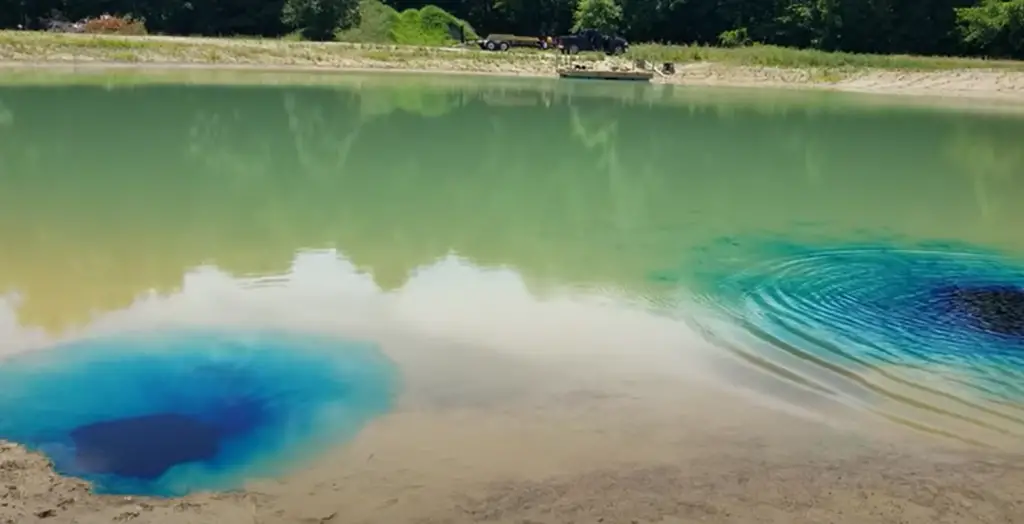
Pond dye is a great way to add a splash of color to your pond and create a focal point in your landscape. With a little bit of planning and care, you can easily achieve the perfect hue for your space. Just remember to remove debris and treat tannins before adding the dye and be sure not to use activated carbon in your filtration system while using it.
Follow The Manufacturer’s Guide
When using pond dye, it’s important to follow the manufacturer’s instructions for the best results. Each brand of pond dye is slightly different and will have its own set of guidelines for use. Be sure to read the labels carefully and follow the directions exactly to ensure that you achieve the desired color in your pond.
Additional information:
- Pond dyes are available in both liquid and powder form. If you have a small pond, the liquid form may be easier to apply. For larger ponds, the powder form may be more cost-effective.
- Pond dyes typically last around six months before they need to be reapplied. However, this will vary depending on the weather and the amount of sunlight your pond receives.
- Pond dyes are available in a variety of colors, including blue, green, red, and black. You can choose a color that matches the natural surroundings of your pond or go for a bolder look.
- When used properly, pond dyes are safe for both fish and humans. However, you should always test the product in a small area before applying it to your entire pond.
FAQ
What is the best pond dye to use?
This is very dependent on your own pond and the goals you want to achieve. There are many different types of pond dyes available, each with their own benefits and drawbacks. Ultimately, the best pond dye for you is the one that will produce the results you want while being safe for both your fish and plants.
Here are a few factors to consider when choosing a pond dye:
- The type of water in your pond: fresh, salt, or brackish?
- The size of your pond: small, medium, or large?
- Your climate: hot, cold, or temperate?
- The type of plants and animals in your pond: aquatic plants, amphibians, fish, etc.?
Is pond dye a good idea?
Pond dye is a great way to keep your pond looking its best. Not only does it add color and depth to the water, but it also helps to reduce algae growth. However, there are a few things to bear in mind when utilizing the dye. Make sure to use the right type of dye for your pond and follow the manufacturer’s instructions carefully. [6]
Pond dye is available in both liquid and granular forms. The liquid form is easy to apply, but the granular form lasts longer. You can find pond dye at most garden stores or online retailers.
Is blue or black pond dye better?
This is a common question with no easy answer. It really depends on your specific pond and what you’re trying to achieve with the dye.
If you’re looking to simply add a pop of color to your pond, then blue is probably the way to go. Blue dyes tend to be more vibrant and will make your pond look more like a sparkling oasis.
On the other hand, if you’re trying to create a more natural look, then black might be a better option. Black dyes can give your pond a darker, richer hue that can make it look like a hidden gem in your backyard.
Of course, there are also green and brown dyes available if you want something in between.
Can you put black dye in a pond with fish?
The simple answer is yes, you can put black dye in a pond with fish. However, it is important to note that there are different types of dyes available on the market, and not all of them are created equal. Some dyes may be more harmful to fish than others, so it is always best to consult with a professional before making any decisions.
There are two main types of pond dyes: temporary and permanent. Temporary dyes will typically last for around 30 days before they need to be reapplied, while permanent dyes can last for up to 12 months. It is important to choose the right type of dye for your needs, as well as take into consideration the size of your pond and the number of fish that you have.
When it comes to applying the dye, the process is relatively simple. Most dyes come in a granular form, which can be easily scattered around the pond. It is important to evenly distribute the dye, as this will help to ensure that it works effectively. Once the dye has been applied, it is important to give it time to work before adding any fish back into the pond.
If you have any concerns about using the dye, or if you are not sure which type of dye would be best for your needs, it is always best to consult with a professional.
When Is The Right Time To Dye Your Pond?
Pond dyeing is typically done in early spring before the pond has had a chance to green up with algae. This gives the pond an opportunity to “rest” and build up its stores of nutrients before the growing season begins.
Dyeing can also be done in late fall after the leaves have fallen and the water has cooled down. This can help extend the growing season for aquatic plants and delay the onset of winter algal blooms.
Is Pond Dye Safe For Humans?
The safety of pond dye for humans depends on the specific product you’re using. Some dyes are made with food-grade ingredients and are perfectly safe for people to be around. However, other products may contain harmful chemicals that can cause skin irritation or other problems if you come into direct contact with them. Always make sure you know what’s in the product before using it.
In general, it’s a good idea to avoid swimming in ponds that have been recently dyed. The dye can cause skin irritation, and you may also ingest some of the chemicals if you swallow any water while swimming. If you do come into contact with pond dye, be sure to wash your hands and body thoroughly as soon as possible.
Is Pond Dye Safe For Fish?
Yes, it is safe for fish when used as directed. The dye will not harm fish, plants, or other aquatic life. Pond dye will also not affect your drinking water.
It works by absorbing sunlight and reflecting it back, which reduces the amount of light that penetrates the water. This can help control algae growth by limiting the amount of sunlight that algae need to grow. [7]
Pond dye can also help improve the appearance of your pond by giving it a deeper, more natural color.
Useful Video: How to Dye a Pond for $20 – Blue Colorant – Reduce Algae and Weed Growth
Conclusion
Pond dye is an easy and effective way to improve the pond’s look. It can also help to control algae growth and protect your fish from the sun. Choosing a pond dye is not difficult, but there are a few factors to consider. We hope this guide has been helpful in answering some of your questions and providing useful tips about pond dyes! Thanks for reading!
References:
- https://www.platinumlakemanagement.com/blog/pond-dye-is-it-worth-the-money
- https://expertaquarist.com/best-pond-dyes/
- https://www.airmaxeco.com/product/using-pond-dye/articles-pond-dye
- https://www.solarogen.com/blogs/news/8-benefits-of-using-pond-dye
- https://www.thepondguy.com/learning-center/pond-dye-the-essential-guide/
- https://pondinformer.com/best-pond-dye/
- https://www.crystalclearpond.com/product/pond-dye-in-water-gardens/articles-natural-water-treatments

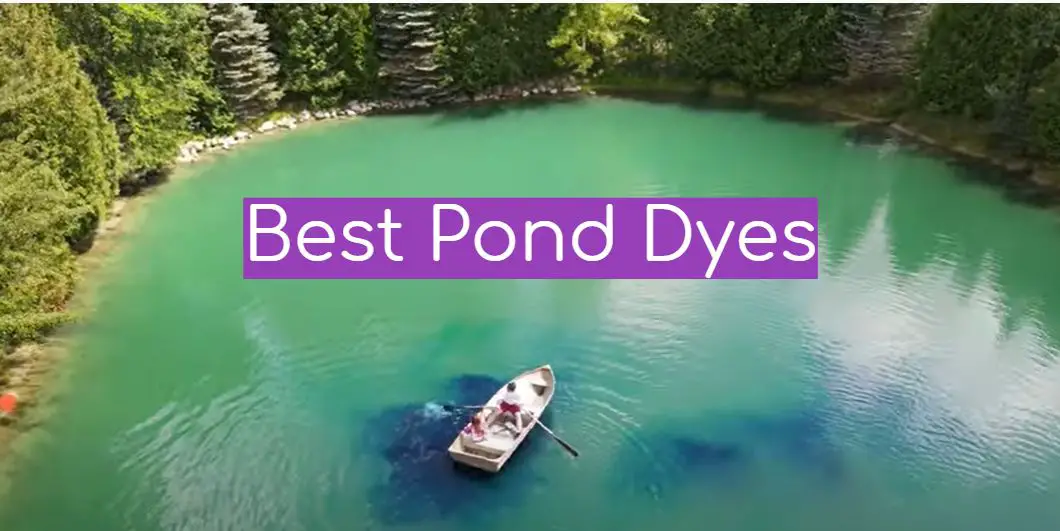




Leave a Reply